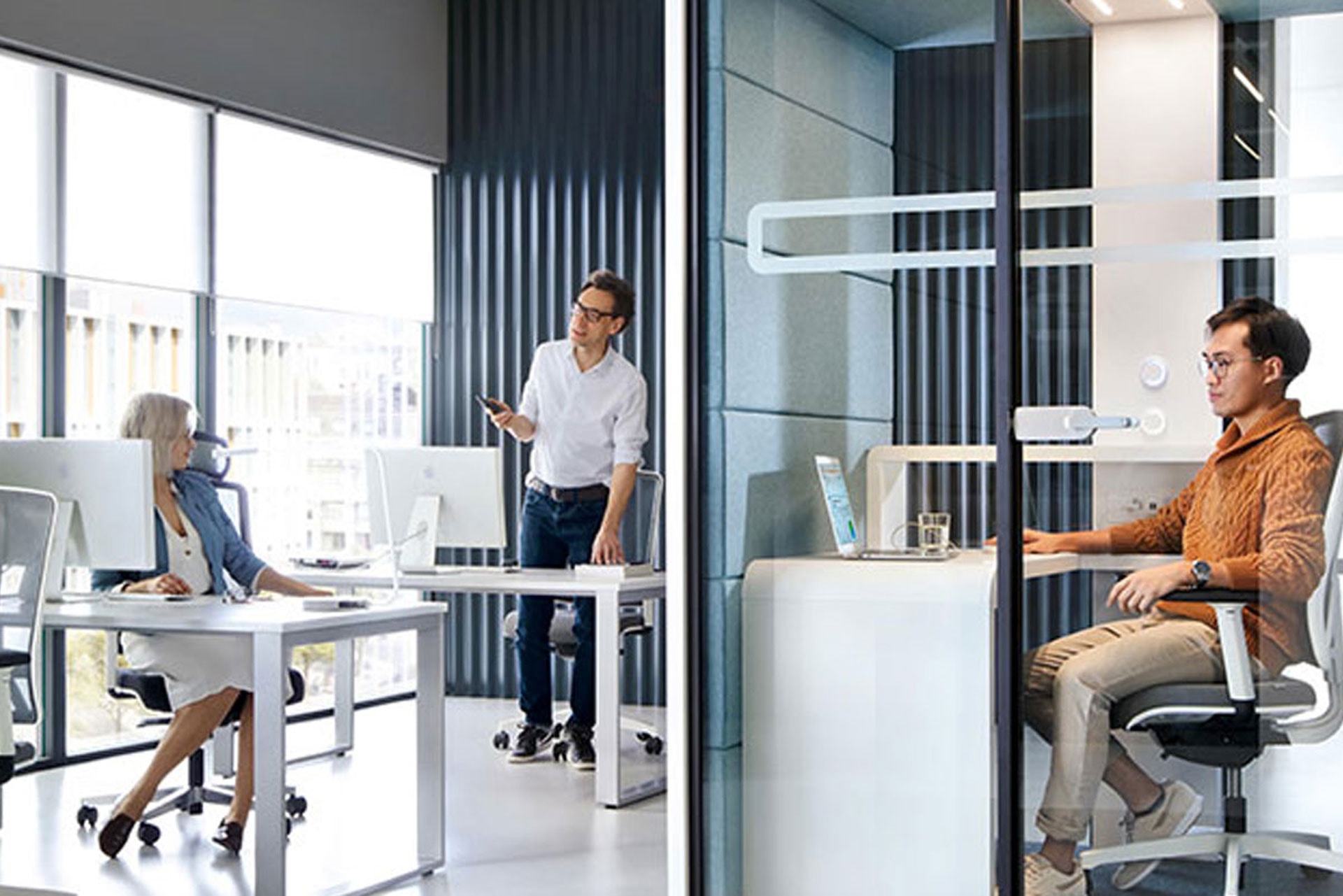
Carbon Calculations in the UK Office Furniture Industry
Carbon calculations in the UK office furniture industry help organisations understand and cut embodied and operational emissions across product life cycles. The sector’s scale makes this important: furniture manufacturing in the UK emitted ~576,000 tonnes of CO₂ in 2022, underscoring the need for rigorous measurement and reduction strategies (Statista). Alongside traditional desks, chairs and storage, office pods (acoustic pods and phone booths) are a growing category with distinct material mixes and carbon profiles. Industry bodies such as the Furniture Industry Research Association (FIRA) and initiatives from the UK Green Building Council (UKGBC) provide tools, benchmarks and case studies that show substantial reductions are achievable.
Key carbon footprint figures (typical product-level estimates)
Office chair: ~72 kgCO₂e – Business Moves Group (“How to reduce the carbon footprint of your office furniture”).
Wooden filing cabinet: ~48 kgCO₂e – Business Moves Group.
Rectangular office desk: ~35 kgCO₂e – Business Moves Group.
Six‑person bench desk: ~228 kgCO₂e – Business Moves Group.
Desk‑high pedestals: ~28 kgCO₂e (wood‑based) vs ~44 kgCO₂e (steel‑based) – Office Resale (“What is the real carbon footprint of your office furniture?”).
Note: Values vary by bill of materials, manufacturing processes, transport distances, energy mix and LCA boundary.
Office Pods - carbon considerations

Environmental benefits
Efficient use of space supports lower whole‑office footprints by enabling compact, flexible layouts – Office Resale.
Some manufacturers state pods are made from 100% recyclable materials
Office pods can displace traditional construction (partitions, meeting rooms), avoiding additional embodied carbon from fit‑outs and future refurb cycles.
Sustainability initiatives and challenges
A lot of manufacturers are committing to annual carbon‑reduction targets (e.g., c.4% per year) via material optimisation, localised supply chains and logistics improvements – FIRA; Work With Island.
High footprints from non‑sustainable materials remain a concern; the industry is addressing this through better material choices and design – “Benchmarking Carbon Footprints of Furniture Products” (feasibility work).
Material Composition
Pods typically combine acoustic panels, steel frames, glass and electrics (lighting/ventilation). This multi‑material mix makes LCAs more complex than for simpler furniture – industry practice as described in the supplied sources.
Material impact analysis (what drives footprints)

For task chairs, metals and plastics account for ~70% of total footprint, per FIRA‑referenced analysis – Posturite (“What is an office chair’s carbon footprint? For dummies”).
In non‑steel designs, wood‑based materials are the main source of embodied CO₂; for steel pedestals, metal and plastic manufacture dominate – Office Resale.
Industry‑wide emissions and why measurement matters
UK furniture manufacturing produced ~576,000 tonnes of CO₂ in 2022 – Statista. This highlights why consistent carbon accounting and product‑level LCAs are necessary to meet net‑zero strategies.
Benchmarking and standards (what 'good' looks like)
The UK uses benchmarking to compare fit‑outs and product choices. A UKGBC case study reports 139 kgCO₂/m², 22% below a comparable “standard” fit‑out – UKGBC (“Low carbon office furniture and services”). This shows that material selection, reuse and efficient design can materially lower embodied carbon at project level.
FIRA has developed methodologies and calculators that help businesses quantify emissions (including from owned sources and purchased electricity) – FIRA (“Carbon Footprint Calculator Template – 2024 Factors | Knowledge”).
Circular economy and practical solutions

Reuse and refurbishment of office furniture deliver significant carbon savings and are often cheaper than buying new made from virgin materials – UKGBC.
Strategies include: specifying remanufactured desks and chairs; choosing modular components for repairability; and prioritising recyclable or recycled‑content materials.
Office pods vs traditional construction
- Modular, relocatable pods reduce the need for permanent partitions and heavy fit‑out works, cutting embodied carbon, installation waste, and future churn impacts. This aligns with circularity principles and supports adaptive workplaces – synthesis from Office Resale, UKGBC case practice and the pod‑focused sources above.
How carbon is calculated (method brief)
The industry typically uses life cycle assessment (LCA) principles: from material extraction through manufacture, transport, use/maintenance, and end‑of‑life.
Calculations consider direct emissions (e.g., manufacturing energy) and embodied carbon in materials. Reported values depend on boundaries (cradle‑to‑gate vs cradle‑to‑grave), data quality and allocation choices – as reflected across FIRA resources and the cited guidance.
Summary
The UK office furniture industry is advancing quickly on carbon measurement and reduction. Typical footprints range from ~28–72 kgCO₂e for individual storage and seating items to ~228 kgCO₂e for multi‑user bench desks.
Material choices are decisive: metals and plastics often dominate for chairs and steel storage, while wood drives impacts in non‑steel designs.
Office pods can help lower whole‑office embodied carbon by replacing heavier construction, especially when designed for recyclability and made with responsible materials. At the sector level, emissions remain material (~576,000 tCO₂ in 2022; Statista), yet benchmarks and tools show that meaningful reductions are achievable – for example, a 22% lower embodied‑carbon fit‑out at 139 kgCO₂/m² (UKGBC), with FIRA providing practical calculators and methodologies. Pairing robust LCAs with circular economy practices (reuse, refurbishment, modularity) gives UK organisations a clear, credible pathway to cut furniture‑related emissions while controlling cost and improving adaptability.
Sources
Business Moves Group – “How to reduce the carbon footprint of your office furniture.”
Office Resale – “What is the real carbon footprint of your office furniture?”
Furniture Industry Research Association (FIRA) – “Carbon Footprint Calculator Template – 2024 Factors | Knowledge”; FIRA materials referencing Work With Island.
UKGBC – “Low carbon office furniture and services.”
Posturite – “What is an office chair’s carbon footprint? For dummies.”
Statista – “United Kingdom: furniture manufacture CO₂ emissions 1990–2022.”
FIRA – “Benchmarking Carbon Footprints of Furniture Products” (feasibility work).
